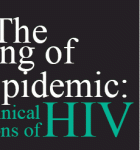 February 4, 2010
February 4, 2010
Contact: Nate Kaplan-(213) 473-7011, Richard Kearns-(310) 488-1328
ROSENDAHL CALLS LOS ANGELES HIV/AIDS ELDER ADVOCACY SUMMIT & NEW MEDIA TRAINING
Forum Open to the Public
Los Angeles – Los Angeles City Councilmember Bill Rosendahl is co-costing an “HIV/AIDS Advocacy Summit and New Media Training Conference” with the City’s AIDS Coordinator’s Office, and a coalition of Los Angeles grassroots advocacy organizations led by activist Richard Kearns.
The conference will be held on the 27th Floor of City Hall in the Tom Bradley Tower on Friday, February 12 from 9:00 a.m. to 6:00 p.m. The program will offer instruction on:
- building a website from scratch
- practicing posting videos & text
- meeting with city councilmembers and their staff
- empowering adult activists and their allies with new media and networking skills
“This is a great opportunity for people living with HIV and AIDS to learn how to use the Internet to communicate with each other and the world,” said Rosendahl. “This day-long training session will educate and empower individuals to use Facebook, Twitter, YouTube and other online sources to network and express themself through the powerful medium of the Internet.”
Kearns, a 58 year-old gay man living with AIDS in Los Angeles for more than 20 years, is a member of the growing group of long-term survivors. He is a community-based Internet advocate, an AIDS activist, and publisher of two blogs. His has become a familiar face at LA City Council meetings, where he speaks regularly on issues that affect people living with HIV in Los Angeles, such as aging, the assisted healthcare system, and medical cannabis.
“Everyone treats us as liabilities when in fact, we are resources – both to ourselves and to our community,” said Kearns. “However, as a group, I’d also characterize elder people living with HIV and AIDS as ‘internet reluctant,’ and ‘technology resistant.’ The question becomes this: Why should we let ourselves be intimidated by something a nine-year-old can master in a single sitting?”
Anyone interested in attending the free conference should contact Richard Kearns at rk@aids-write.org or call 310-488-1328.
www.councilmanrosendahl.com
City Hall (213) 473-7011 West LA (310) 575-8461 Westchester (310) 568-8772
Filed under: AIDS & aging, AIDS activism, blog/vlog, champ, cultural activism, elder summit training 2010, havvacc call to action, havvacc metaphoric resource, havvacc storytelling text, havvacc text resource, HIV commission LA county, HIV/AIDS, hiv/aids global, hiv/aids in california, hiv/aids in los angeles city, hiv/aids in weho, hiv/aids united states, HIVERS/PWAs over 50, hybrid media, LA city AIDS coordinator's office, LA city council, political activism, politics, public health policy, schac | Leave a comment »












